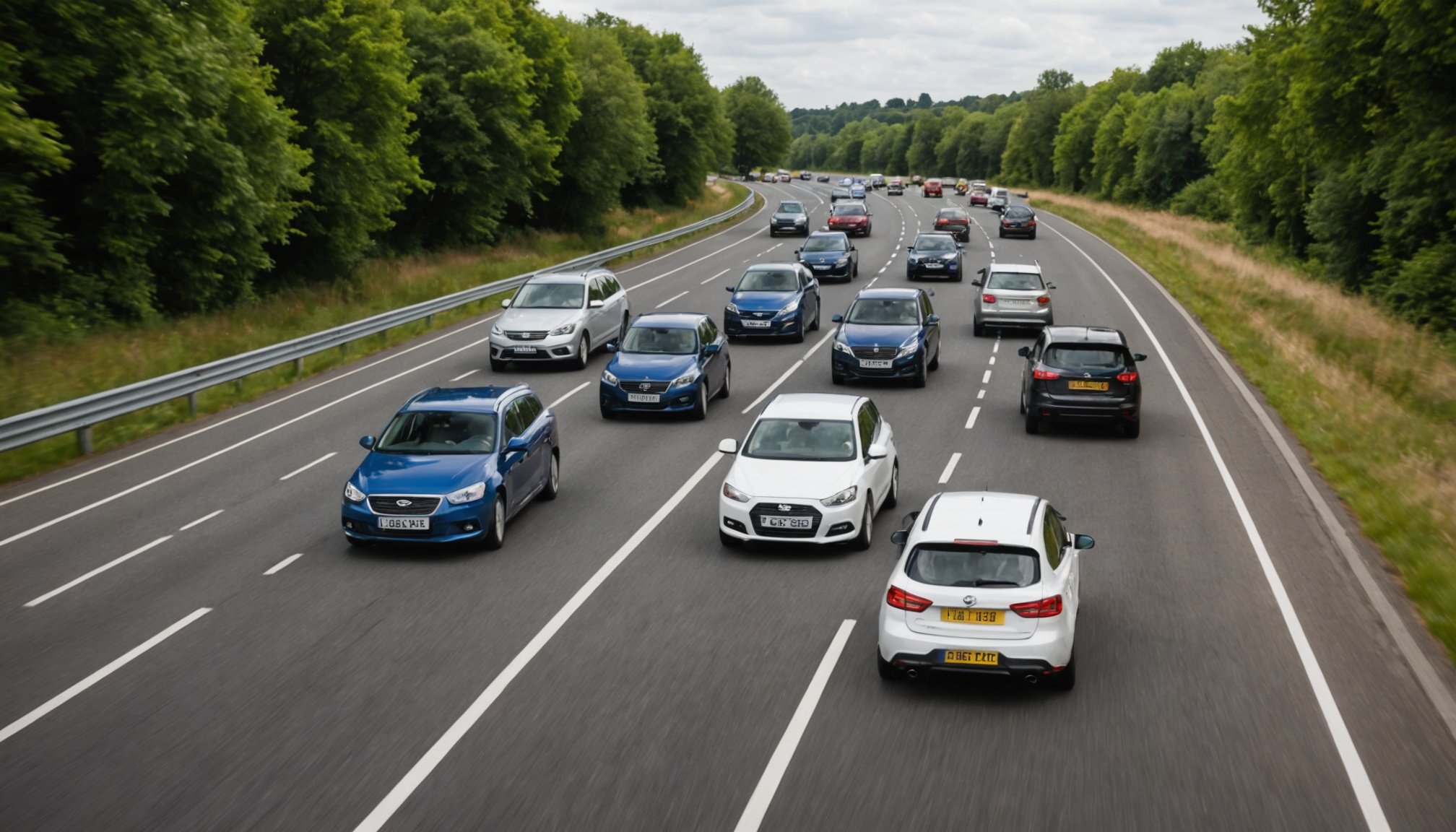Understanding Road Rage and Its Causes
Road rage, a term widely used to describe aggressive driving, manifests when drivers lose control of their emotions, often resulting in hostile or reckless behaviors. Such conduct not only endangers the aggressive driver but also other road users. Individuals prone to road rage often exhibit a psychological profile marked by high stress levels, frustration, and a low threshold for provocation.
Common triggers of road rage include scenarios where drivers feel obstructed or delayed. Traffic congestion is a known catalyst, as it exacerbates feelings of being stuck and out of control, leading to heightened aggression. Late arrivals or unforeseen delays can further agitate drivers, leading to behaviors such as tailgating, honking excessively, or even attempting risky maneuvers to bypass traffic.
Also to discover : Maximizing Your Vehicle”s Transmission Longevity: Essential Tips for UK Driving Conditions
Additionally, personal factors play a significant role. Drivers may carry stress from personal issues into their driving, which can amplify their reactions to minor driving inconveniences. Recognising these triggers is a crucial step toward mitigating aggressive driving behavior.
Understanding that others may be under similar stress can foster empathy and patience, potentially diffusing tense situations on the road. Encouraging reflection on the consequences of road rage can also deter aggressive actions and promote safer driving habits for everyone involved.
In the same genre : Essential Tips for Ensuring Your Vehicle Meets UK Legal Standards in Rural Driving Conditions
Strategies for Staying Calm on the Road
Navigating roads can be stressful, but managing stress effectively is key to maintaining control. One technique is practising deep breathing. This simple yet powerful method involves taking slow, deliberate breaths. Begin by inhaling deeply through your nose, holding the breath briefly, and exhaling slowly through the mouth. This process can aid in reducing tension and promoting focus.
In addition, integrating mindfulness while driving can help in maintaining emotional control. When feeling stressed, gently bring your attention back to the present moment. Focus on the sensations of holding the wheel, the sound of the engine, or the sight of the road ahead. This practice can prevent stress from escalating into frustration.
Maintaining a positive mindset is equally crucial. When encountering difficult driving situations, remind yourself of the bigger picture. Consider the trip as a whole rather than the momentary stressor. This shift in perspective can transform a potentially stressful experience into a manageable one.
Lastly, utilising music and other distractions can significantly reduce frustration. Choose calming playlists or engaging audiobooks that can divert attention and instil a sense of calm. However, always ensure that these distractions do not compromise your alertness or safety on the road. By incorporating these strategies, you can enhance your driving experience and foster a calmer commute.
Techniques for Defusing Conflicts with Aggressive Drivers
Dealing with aggressive drivers on the road can be daunting, yet implementing effective conflict resolution techniques can make a significant difference. One vital approach is understanding the power of body language and non-verbal cues. When you encounter an aggressive driver, remaining calm and composed, with a relaxed posture, can help in de-escalating the situation. Ensuring your gestures do not convey anger or frustration is crucial in demonstrating a non-threatening demeanor.
It’s essential to integrate communication strategies that emphasize patience and empathy. Recognising the pressures and challenges the other driver might be experiencing can shape your reactions. Rather than responding in anger, consider their perspective and how a calm approach might defuse a potential confrontation.
When faced with dangerous scenarios, defensive driving techniques come to the forefront. Safely disengaging from the situation is paramount. Try to maintain a safe distance, avoiding any form of eye contact that might be perceived as a challenge. Furthermore, having an exit plan, like taking an alternative route if necessary, ensures safety.
In summary, effective conflict resolution on the road involves leveraging body language, channeling patience and empathy, and adopting defensive driving strategies to mitigate risks and enhance road safety.
Understanding the Legal Implications of Road Rage
In the UK, road rage is a serious offence, with a range of legal consequences. Laws specifically addressing aggressive driving behaviours include the Road Traffic Act and the Dangerous Driving statute. If a driver is found guilty of engaging in road rage, they can face harsh penalties, including fines, points on their license, or even imprisonment, based on the severity.
The responsibility of drivers extends beyond maintaining control of their vehicles; they must also maintain composure. Aggressive driving is not only reckless but could also lead to legal repercussions like being charged with assault if it involves physical altercations. Authorities take such incidents seriously, reflecting the potential danger posed to other road users.
Examining case studies offers insight into the gravity of the situation. Consider an instance where a driver, angered by another motorist’s actions, escalated the situation to physical violence. The legal outcome involved significant fines and a driving ban, highlighting the severe impacts aggressive behaviour can have. Another case involved a heated argument escalating to dangerous driving practices, resulting in criminal charges.
Road rage laws exist to protect all motorists. Understanding these regulations is crucial to fostering a safer driving environment and avoiding unintended legal entanglements. Ensuring calm and patience on the roads is not only wise but legally prudent.
Statistics and Insights on Aggression in UK Driving
UK roadways exhibit a concerning trend of periodic road rage prevalence and aggressive driving behaviours. Recent UK driving statistics indicate that incidents of road rage have been steadily rising. In 2021, an estimated 60% of British drivers admitted to experiencing some form of road rage, marking a noticeable increase compared to previous years.
Examining the data further, we observe specific trends in aggressive driving. These behaviours include excessive speeding, tailgating, and erratic lane changes. Reports suggest that aggressive driving in the UK contributes to approximately 30% of traffic accidents. This figure is not only a reflection of direct collisions but also encompasses near-miss incidents that pose potential threats to road safety.
Analysing accidents caused by road rage, it’s noted that these incidents often have a compounding effect. By fostering an atmosphere of tension and impatience, aggression can trigger further aggressive responses from other drivers, escalating situations quickly.
Recent initiatives seek to curb this rising trend by introducing driver awareness campaigns and stricter penalties for offenders. Understanding the dynamics and frequencies of road rage incidents is crucial in developing effective strategies to ensure safer driving experiences across the UK. Addressing these aggressive driving trends requires collective effort from authorities and drivers alike.
Testimonials and Expert Opinions on Handling Road Rage
Personal experiences often provide valuable lessons on managing emotionally charged situations like road rage. Many drivers have shared personal anecdotes about overcoming such incidents by employing effective conflict management strategies. A driver recalled using deep breathing techniques to remain calm when faced with an aggressive tailgater, which not only dissolved tension but also prevented escalation.
Experts emphasize the importance of understanding underlying triggers. Psychologists suggest that recognising one’s own emotional responses can help in reducing the likelihood of reacting aggressively. Meanwhile, driving instructors recommend practical strategies such as maintaining a safe distance and avoiding eye contact to prevent further aggravation.
Tools and resources for tackling road rage are also invaluable. Several apps now offer in-car meditation exercises designed to soothe driving stress. Furthermore, workshops on defensive driving teach critical skills for managing on-road confrontations.
Adopting these recommendations can transform personal experiences from potentially dangerous encounters into opportunities for personal growth. The combination of expert knowledge and available resources equips drivers with a comprehensive toolkit to navigate road rage effectively and safely.











